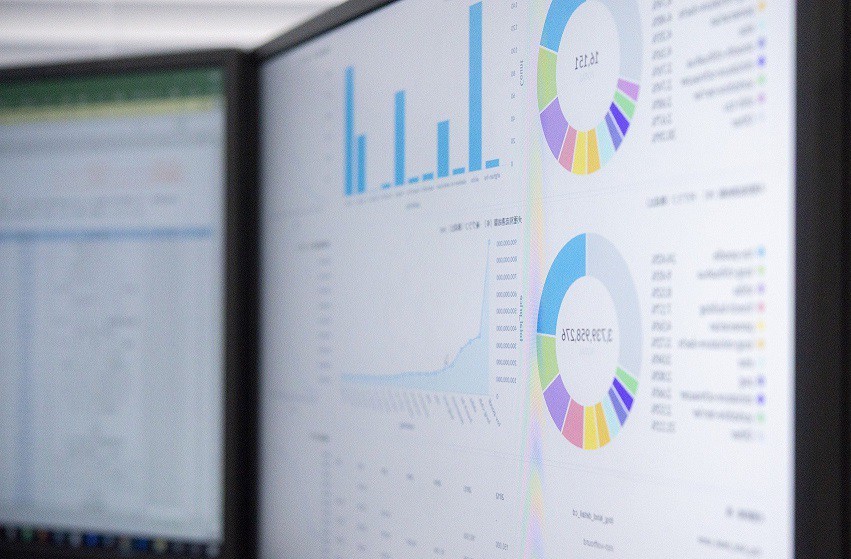
You should monitor the leads, conversions, and other outcomes from these phone conversations if your company uses its website or digital advertising to drive phone-based sales in order to demonstrate the effectiveness of your marketing initiatives.
You may better improve your website and campaigns by tracking phone calls in Google Analytics, which can provide you with information on the effectiveness of your campaigns and keywords as well as help you understand the conversion process. Using Google’s built-in phone call conversion monitoring or integrating your call tracking software with Google Analytics are two options for tracking phone call leads and sales in Google Analytics. This is how it goes.

How to Use Google Analytics to Track Phone Calls
Using Google’s phone call conversion tracking, you may monitor phone calls that come from a phone number on your website. This is the quickest approach to determine how well your adverts are converting website visitors into phone calls. This is done by replacing your phone number on your website with dynamically created Google forwarding numbers. Here’s how to configure Google Analytics to track calls.
First, make sure that your Google Ads account is configured with call extensions and call reporting.
In Google Ads, create your conversion activities for phone calls. Whatever you define as a conversion should be these actions. such as “item purchased” or “appointment set.”
Decide on a call duration. Since this is what Google Analytics uses to define a “conversion,” you’ll need to know how long an average phone call lasts when conversions take place.
Your conversion tracking tag should be setup. This is what enables Google to link a conversion to your Google Ads campaigns and record it in Google Analytics. It includes uploading two javascript code snippets to your website.
Start tracking calls after checking your code! Keep in mind that it can take a few hours for your advertisements to be set up for this conversion activity, and that while you’re testing it, you’ll be charged for ad clicks.
Google offers the native call monitoring feature in Google Analytics for free, which is a wonderful perk. You still have to pay for the clicks on your sponsored search advertisements, but Google Ads gives you call data for free. However, this method of call tracking in Google Analytics has several disadvantages.
How to Configure Google Tag Manager for Phone Call Tracking
Google Tag Manager is another tool you may use to monitor calls coming from your website. You may quickly add event tags to your website using Google Tag Manager so that you can keep track of phone calls.
Phase 1: Create a trigger that activates in phase one if the click URL contains the word “tel”
Use the markup “tel” followed by your company’s phone number to make it clickable before you begin adding an event listener in Google Tag Manager. For instance, you would use the markup “href=tel:833-338-3838” if your company’s phone number was 833-338-3838.
Phase 2: Connect the Tag to the Trigger.
The trigger you just constructed needs to be linked to an event-based tag in order to be used. This tag will send your data to Google Analytics once it has been published.
Phase 3: To determine the traffic sources generating calls, convert phone call clicks into a conversion goal.
You should make this a conversion objective once you have everything mentioned above operating properly. This will enable you to determine where your phone call clicks are coming from, such as whether SEO, paid search, social media, or direct traffic is generating your calls.
Use of Google’s Native Call Tracking Has Drawbacks
- Only the call time can be used by Google to identify a conversion; therefore, any call that lasts longer than two minutes, for example, will be counted as a conversion. This means that non-sale outcomes like product queries, hold times, and customer service calls will all be included in the calculation of conversions. This can falsely inflate your return on ad spend (ROAS) and drastically skew your cost per acquisition (CPA).
- Only calls that come as a consequence of someone clicking on your paid search result and then landing on your website are recorded by Google since it can only track conversions from advertisements. Customers that see your advertisement but do not click on it may later visit your website and call your company, but the call will not be monitored and no conversions will be logged.
- Google is unable to offer any call insights – While Google can offer data such as keywords, ads, ad groups, and campaigns that are generating inbound calls, you are unable to obtain any other data from the call in order to gain insight into the nature of the calls and create comprehensive customer profiles.

The Benefits of Call Tracking Software for Google Analytics Call Tracking
You can advance your site optimization efforts by integrating a call tracking tool with Google Analytics. This can drastically lower your CPA, which is always a good thing, and it will help you increase conversions on the phone and on your website.
Here are some benefits of integrating Google Analytics with call tracking software.
1.Greater phone call conversion reporting accuracy – When you combine Google Ads with a call tracking technology like Invoca, you can leverage conversational analytics driven by AI to precisely and automatically identify phone call conversions. With call tracking, you can also identify, categorize, and report on a wider range of phone call events, such as demonstrated product interest, service calls, scheduled appointments, or any other call outcome that is significant to your company.
2.Understanding what occurs during sales calls You can discover client interactions, such as customer complaints, website troubles, or customers calling to buy things that you aren’t advertising, using AI-powered conversational analytics tools like Invoca Signal Discovery. In order to report on and track new event Signals in Google Analytics, this data is used to construct them.
3.Additional call information for ad optimization – Call tracking with Google Analytics provides you with a wealth of data, including keywords, ads, and campaigns, as well as specific web pages that generated calls. You can even identify the keywords that callers used, which can be used to improve your campaigns. Additionally, you can listen to call records to hear exactly what customers are saying.
4.Ability to track calls that aren’t via ad clicks – If you use Google Analytics with a call tracking platform, you can additionally track calls that came from your website directly or organically. All forms of sponsored media, including display, paid search, YouTube advertisements, and others, can also be tracked for calls. Keep in mind that Google Ads only allows you to examine call data from your website and data from Google properties. For instance, Microsoft Ads (also known as Bing) can be visible in their analytics platform reporting but not in Google Analytics.
5.Data to generate Google Analytics call-based client segments – By leveraging call tracking data to create call-based segments in Google Analytics, you may increase conversions even more. For instance, you can establish an audience for Google Ads or the Google display network by identifying callers who did not submit an application. To assist re-engage people who abandoned their application, this audience can be retargeted or pushed for paid search.



